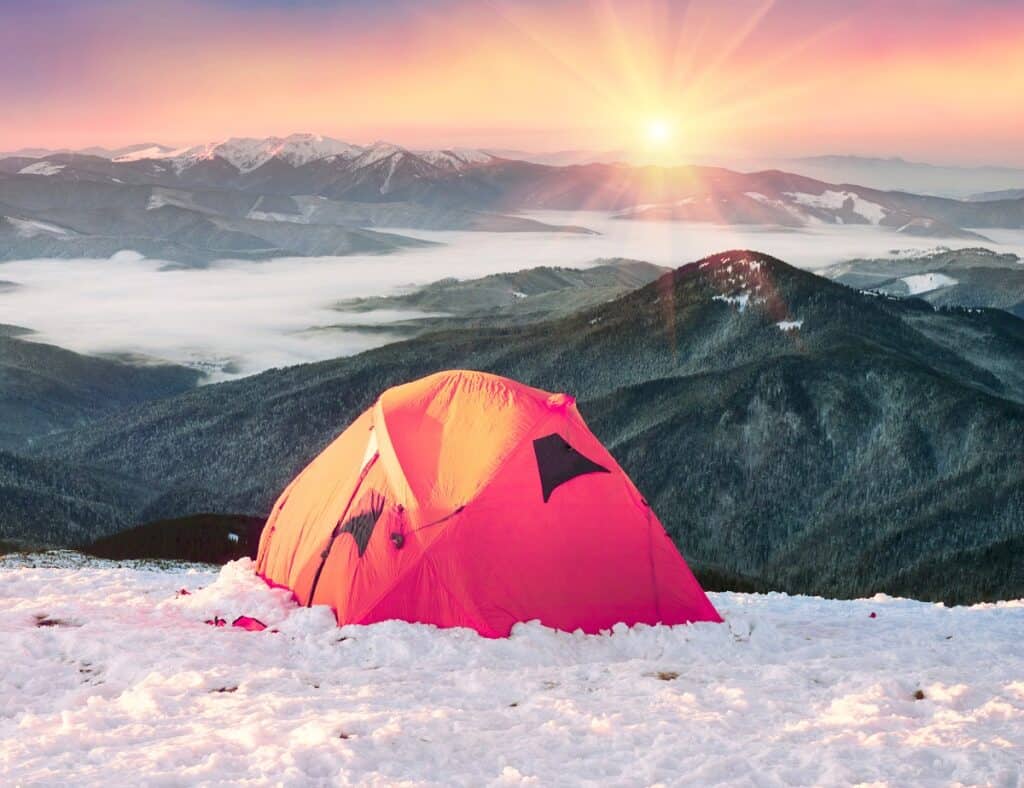Confession time… winter camping is not my thing. That’s why I asked Paul to share his best tips with you on how to keep warm in a tent. And he put together an amazing list for you! However, we do find ourselves camping on cold nights in the early spring and late fall when temps drop down near freezing and I immediately found a couple of changes we could make in our camping gear to keep comfy warm. Ladona
Camping in winter is exciting. It’s an entirely different adventure than summer camping. But it comes with its own unique challenges. How to keep warm in a tent isn’t as difficult as you think. It takes a little forethought to stay warm on cold nights but can be enjoyable.
If you are not experienced camping in winter or cold weather, it’s time to do some research. Staying warm in your tent is essential, both for your enjoyment and your survival. Winter camping requires preparation and planning. And remember that it will take more equipment than you might be used to packing.
1. Start With the Right Tent
Keeping warm starts with the walls you have around you. Using a tent with lots of vents and thin material isn’t going to do much to keep in the heat. Or keep out the cold. Cold weather tents are built with thicker fabric. Many have a vent in the ceiling for a stove chimney.
The fabric of these tents insulates against the elements much better than the nylon of most warm weather or 3-season tents. If you are camping in cold weather, make sure you get the right tent.
2. Take Advantage of Your Body Heat
The size of your tent will make a big difference as well. We, humans, generate a lot of heat. If your tent is too big, you won’t be able to capitalize on the body heat. Using a 10-man tent with only 2 people sleeping makes no sense. Squeezing 4 people into a 4-man tent will keep you all toasty warm. So pick a small tent in colder weather and let your body heat keep the tent warmer.
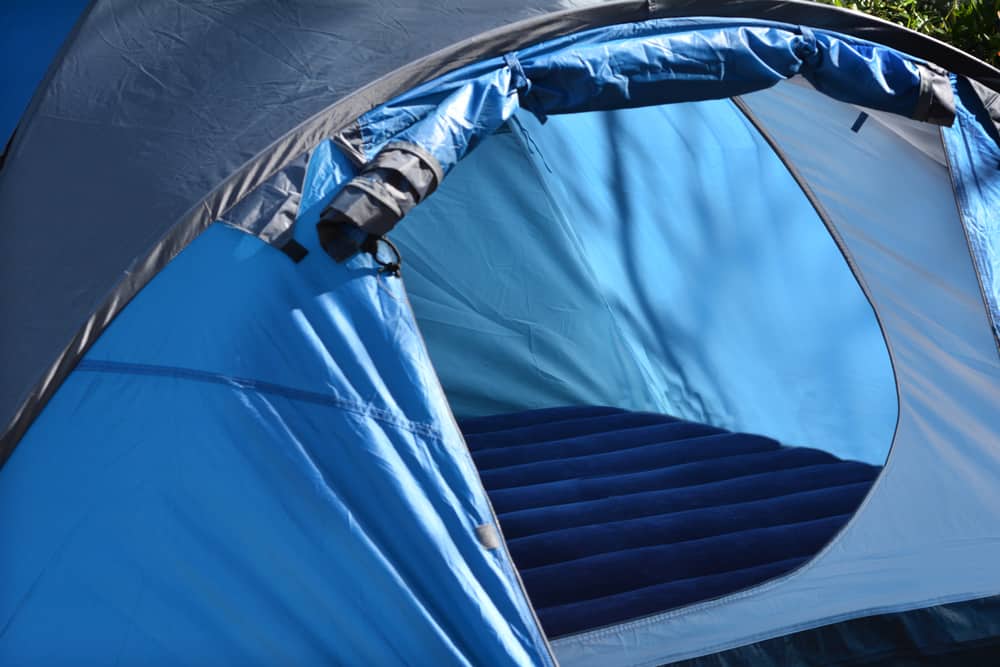
3. Know the Difference: Air Mattress vs Sleeping Pad
The novice camper usually selects the thickest air mattress possible. They usually find the biggest, most comfortable mattress that will fit in their tent. Fight this urge when camping in cold weather.
The thicker your air mattress, the harder it is to warm the air inside the mattress on a cold night. So the air will not act as an insulator. And then that cold air seeps right into your sleeping bags.
It may seem counterintuitive, but a thinner mattress or sleeping pad will stay warmer. The air inside will warm and act as an insulator between your sleeping bag and the cold ground.
Thin self-inflating sleeping pads of only a couple of inches thick will keep your body heat inside it instead of letting it seep into the ground. A larger air mattress will have too much air for your body to warm up. A thin Thermarest-style mattress under your self-inflating mattress will add an extra layer of protection between you and the ground giving you a good night’s rest.
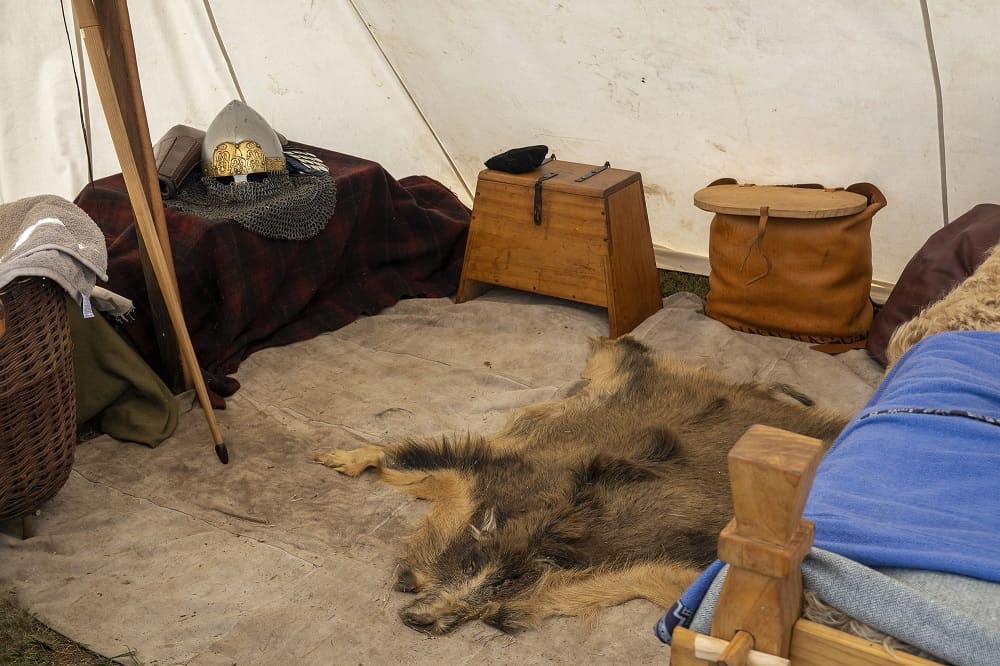
4. Go “Full Viking” with Ground Mats or Rugs
You can go full Viking and put mats or rugs on your tent floor to help stay warm. They will keep the cold ground from sucking the warm air out of your tent. Rugs work exceptionally well when it’s freezing cold and create a comfortable living space inside your tent. If you are car camping and have the extra space to pack the rugs, real or fake fur rugs will feel opulent and be functional in retaining the warmth.
The combination of rugs, Thermarest pads, and air mattresses will give you a comfortable sleeping surface. You can also put a blanket between the air mattress and your sleeping bag for an insulating layer.
Check out these posts for gift ideas for your favorite campers!
- Incredible Camping Gift Ideas for Women
- Forty Super Fun Camping Gift Ides for Kids
- Best Gift Ideas for RV Lovers that Have Everything
5. Select the Right Sleeping Bag
Winter sleeping bags can make a big impact on the experience of your journey. Before you go, choose a warm enough sleeping bag with the lowest temperature ratings for the worst scenario you can imagine on your camping trip.
For different insulation types, there are roughly two main kinds of sleeping bags on the market. The down fill is much lighter and warmer and performs well in a cold environment. But they are expensive and not good for damp conditions. You can choose synthetic fill sleeping bags if budget matters. It wicks moistures out quickly, keeping your body dry and cozy.
Also, take a look at using a sleeping bag liner in combination with a good sleeping bag. A liner can add 5-15 degrees of warmth for a good night’s sleep.
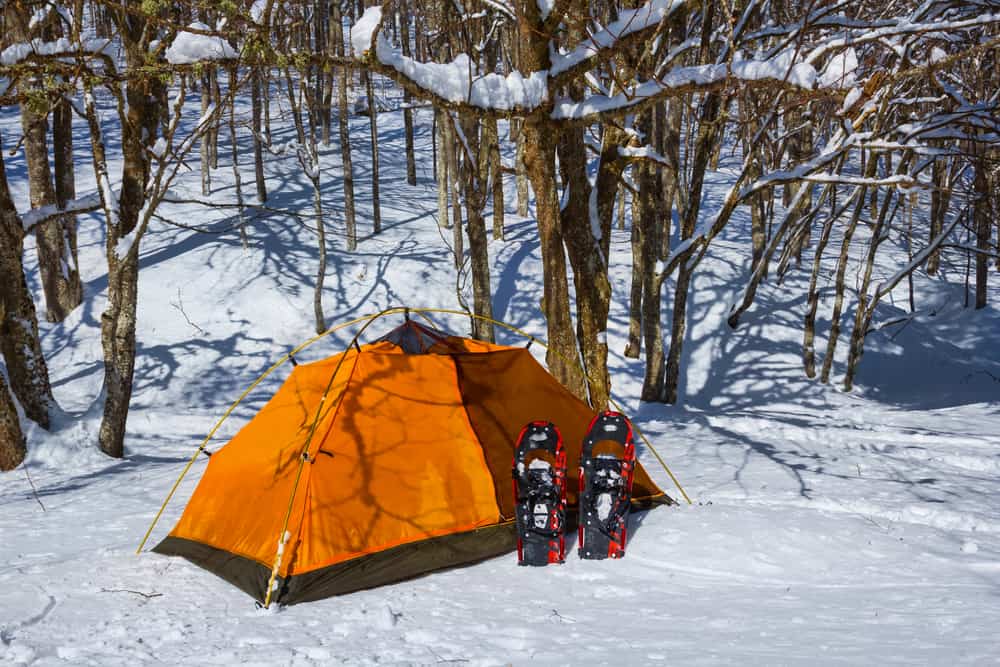
6. Properly Dress in Layers
This should go without saying. If it’s cold out, dress like it’s cold out. Wearing loose-fitting layers when camping and hiking in winter weather will allow you to regulate your temperature by removing or adding layers. When you are inside your tent for the evening, you might be able to get away with just wearing your thermal base layer.
A fleece layer over your thermal base layer is also a good idea when camping in the middle of winter. It’s almost like wearing pajamas to lounge around in the comfort of your tent.
7. Don’t Bring Tomorrow’s Clothes Inside
I suggest leaving your outer layer of clothing outside for the evening, protected from getting wet or covered in snow. It seems crazy, but there is a logic to it. Your breath and body heat create humidity inside the small space of your tent. That humidity can get trapped in your outer layer.
When you dress in the morning to go outside, though it might feel warm, you will get cold quickly as the moisture in your outer layer begins to freeze. If left outside, your outer layer will be cold when you put it on, but your body heat will warm it up quickly.
8. Keep Your Feet Toastie in the Tent
Tent booties! These thick warm slippers are great for wearing inside your tent. They are thick enough to keep your feet warm and let you move around without tracking snow, water or dirt all over your living area. Most brands of slippers have a sole that is rubberized enough that you can even wear them on a quick trip outside to the bathroom.
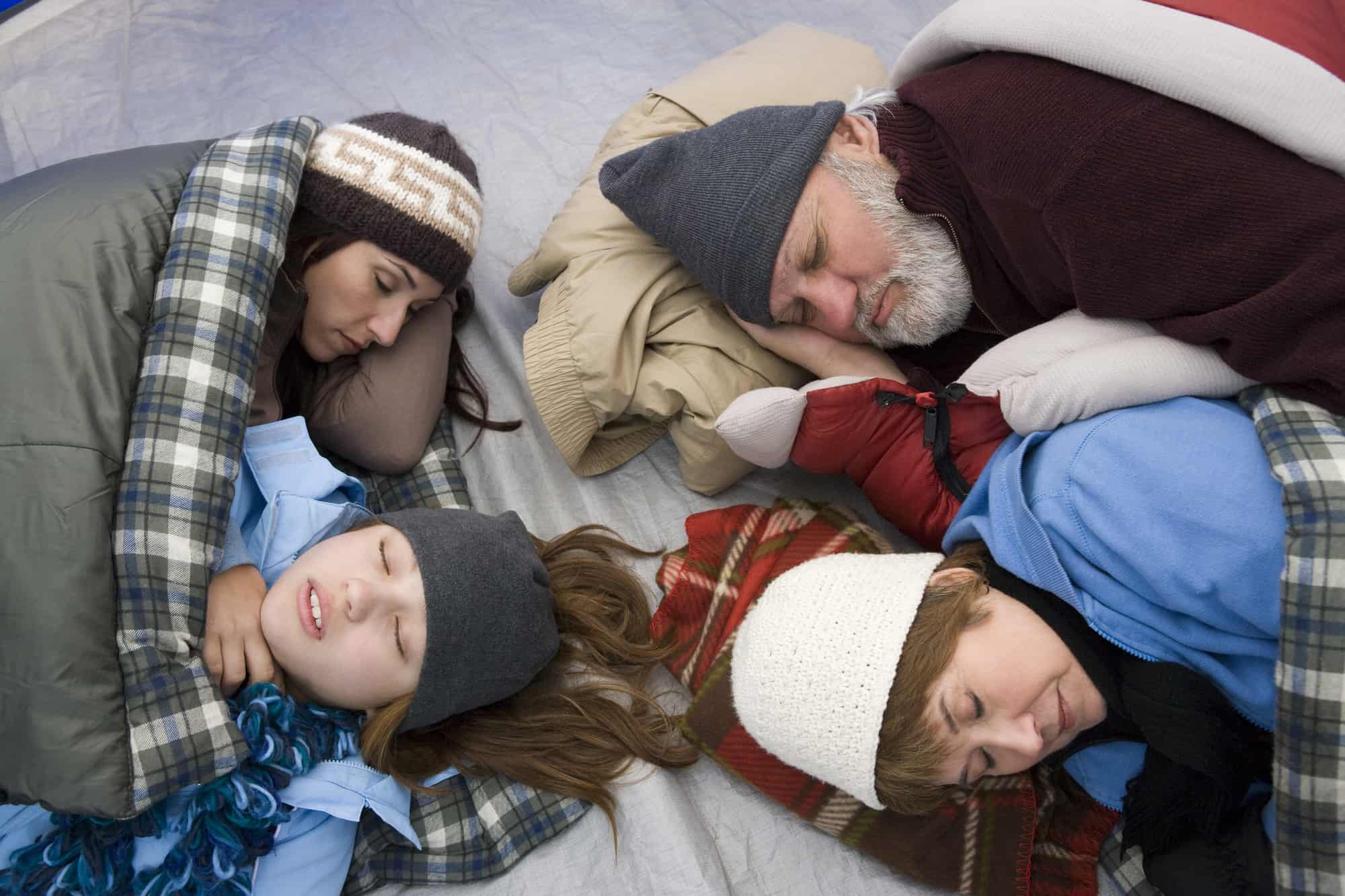
9. Wear a Beanie While You Sleep
A merino wool beanie is perfect for retaining heat while you sleep. Your sleeping bag is wrapped tight around you, protecting your core body temperature and usually, the only area exposed to cold air is the top of your head.
10. Consider a Tent Heater or Stove
There are heaters and stoves that you can use inside your tent and will radiate heat to keep you warm. They can keep you nice and warm, but there are some things to keep in mind to stay safe.
- Your wood-burning stove, propane heater, or portable electric heater should never be left unattended. There is always a fire risk when using a heater or stove in a tightly enclosed place like a tent — running your heater or stove while sleeping or outside your tent can lead to catastrophe. If you plan on using them all night, make sure you have a plan for watching them and taking shifts throughout the night.
- Ensure the portable heater is working correctly. It’s critical that your tent is ventilated per the manufacturer’s instructions to avoid creating carbon monoxide in your tent.
- Keep heaters away from anything that can easily catch fire. Resist the temptation to dry your socks on them!
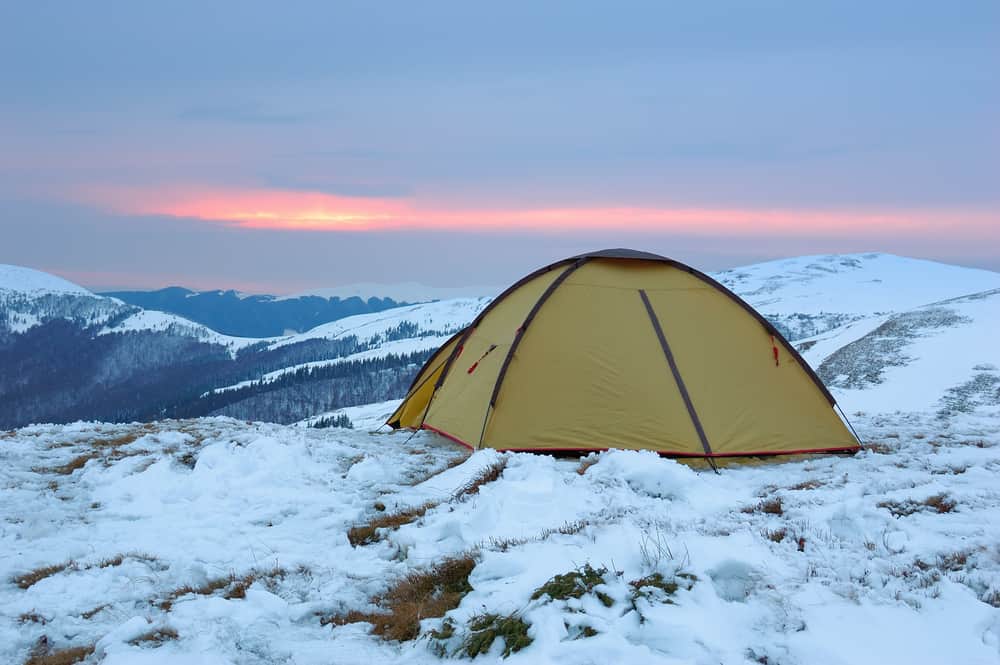
11. Embrace Hot Water Bottles and More in Cold Weather
There are many other options for staying warm in your tent. Hot water bottles in your sleeping bag, hand warmers, thick blankets, and snuggling with your loved one. If you’ve never camped in the winter, you may want to try going with someone who has the experience or talk to friends you know who go winter camping. They can be a wealth of knowledge.
Final Thoughts
Experiment with these different ideas and see what works for you to keep warm in your tent. We’re all different and have different ways of keeping warm. However, the general rules are the same for everyone. Once you know these concepts, you might enjoy cold-weather camping.
 About the author:
About the author:
Paul is a software engineer with a passion for the outdoors. He loves sharing his tips and guides to help people enhance their outdoor experiences. He is the creator of cutecamper.com.
Hey… for a few more tips for staying warm in cold weather check out these articles:
Best Winter Hiking Gloves: Keep Your Hands Toasty Warm
Best Merino Wool Base Layer for Women: Stop Freezing on the Trails!
